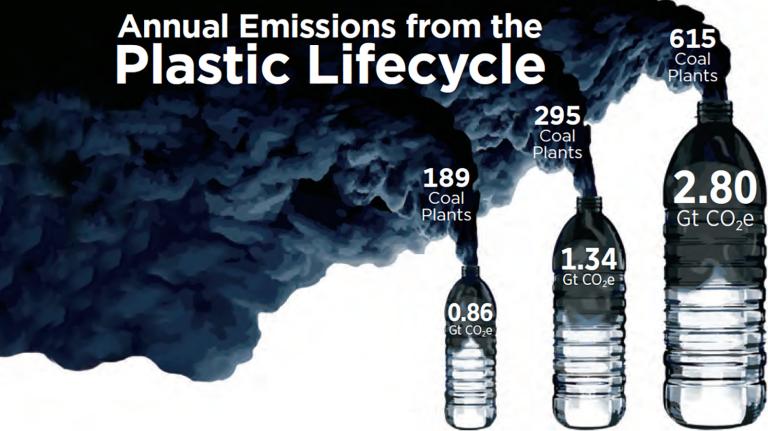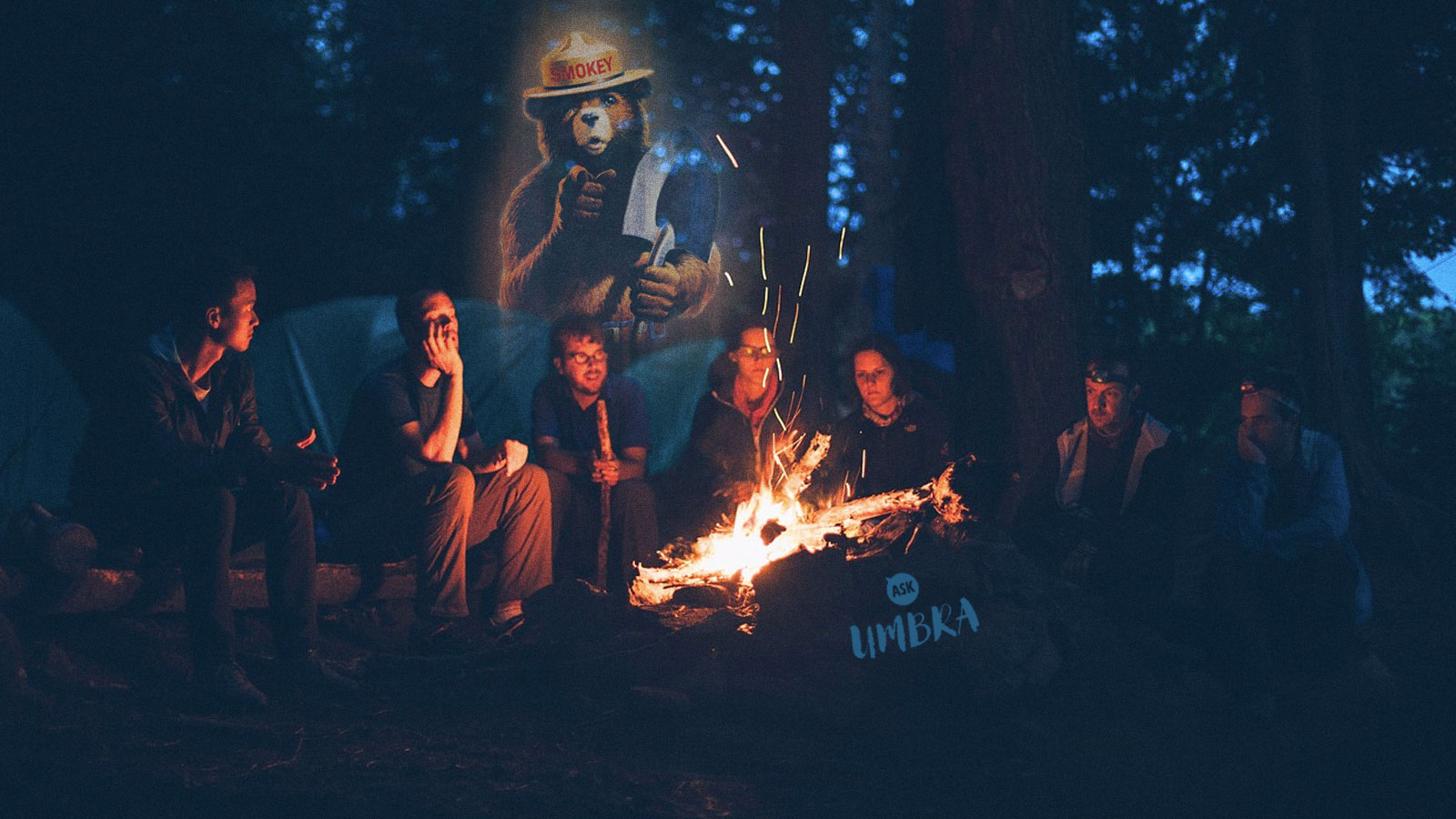Q. Dear Umbra,
I’ve just gotten into camping and hiking and spending time in nature at the worst possible time. Where I live, in Washington, wildfires have gotten crazy and I’m terrified of somehow being responsible for one by just being a human in the wilderness. I don’t feel like I’m as experienced or equipped as everyone else and it makes me afraid to try to venture out on my own more. What should I do?
— Fire Events Are Really Scary
A. Dear FEARS,
Wow, do I relate! When I first moved to Seattle, I noticed that everyone around me was dripping in Pata-Gucci, posting pretty photos of alpine landscapes, and sporting two-toned shins in the summer. I, on the other hand, had never slept in a tent and the closest things I owned to hiking boots were my mother’s old running shoes. I knew that I was missing out on something but I wasn’t quite sure what it was.
Then I had a few good long stomps through some dense and damp evergreen forests, and I found they left me calmer. My shoulders dropped three inches further from my ears, my mind wasn’t full of tweets and yelling, and my skin and hair suddenly glistened with a healthy sheen akin to a spring-fed forest nymph.
Humans possess something called “biophilia,” which in Latin means “love for life,” and in English means “your body and brain feel better when you’re surrounded by green growing things.” Waterfalls, rivers, and basically any body of moving water give off negative ions, which some research says reduces depression; coniferous trees release monoterpenes, molecules that may reduce stress and stimulate all kinds of body systems like digestion and the immune function. The Japanese name for seeking out the physical and psychological cure of the trees is shinrin-yoku, or forest bathing.
Part of your quandary here is that you love to be in the woods, but you don’t feel like you belong there. I assure you that you do. Every human has a body and a brain, so every human should get to benefit from the advantages of being out in the woods. You have a body that wants to be in the wilderness, and even better, you possess an environmental consciousness that makes you want to do it in such a way that it minimizes impact to the ecosystem around you. Who deserves space among the rocks and trees and rivers more than you?
But for many people, getting to the woods in 2019 has become something of a luxury endeavor. Trails and campsites might be cheap or free, but four-wheel drive cars, nylon origami tents, and waterproof sweat-wicking lightweight gear in bright, hunter-proof colors are not. “There are so many places where the wilderness has just been kidnapped by folks for whom it’s a competition, and you have to go out in this very particular way and spend hundreds of dollars to feel like you belong — and even then you might not,” says Jéhan Òsanyìn, executive director and founder of Earthseed, an outdoors education nonprofit in Seattle.
Part of Earthseed’s work is “decolonizing wild spaces,” counteracting what Òsanyìn describes as the legacy of European settlers and colonists who applied harsh rules to wild lands to keep out the people who weren’t like them. Òsanyìn says the outdoor education world’s sense of exclusion — both cultural and financial — can translate to a sense of rejection for enthusiasts with diverse backgrounds, body types, and boot-lacing expertise.
Journalist Zoë Schlanger wrote a perfect description of this exclusion phenomenon from a gear perspective in a blog post for Canadian retailer SSENSE: “It’s a busy aesthetic, over-accessorized but reaching towards purity, the promise of untouched wilderness, the radical simplicity of a backwoods fantasy … Just you and the good green earth and your status water bottle in that $750 USD nylon Prada belt bag.”
Even if you manage to avoid the allure of backpacker swag, beginners get put off by the sheer amount of time and knowledge required to actually be an outdoors person — which starts to get to your point, FEARS. There’s the time spent getting to a properly remote place, because even moderate noise pollution from a highway or flight paths can interfere with the healing effects of forests; the time spent planning and gathering supplies for a stay in the woods; the time spent physically training for that stay (mountains don’t play!); and the time spent learning what to do if you’re attacked by a bear or freezing in a fire-prone forest.
While we may be born with an inherent sense of biophilia, we’re not born with knowledge of how to survive in the outdoors. Plenty of devastating wildfires are caused by people doing dumb things — ranging from buck-wild-intentional dumb (like throwing a firework into a wooded ravine) to honest-mistake dumb to desperate dumb (like using a fire to signal for help in the woods). I believe in you, FEARS, so I don’t see you as the buck-wild-dumb type, but to avoid the honest-mistake or desperate scenarios, you have to learn from other people with experience.
There are some basic rules to follow if you’re nervous about fire in particular: Òsanyìn says to never start a campfire outside of an established fire ring, and never go to sleep without pouring enough water on a fire to make the ground cool to the touch. And always triple-check the status of burn bans in whatever park or regional forest you’re heading into.
But in order to play your part in building a healthy, inclusive, eco-friendly outdoors community, it’s important to update your understanding of some legacy woodsy policies. One reason forests in the Western United States today are so prone to devastating wildfire is the back-asswards model of colonial forest management. Native American tribes knew how to keep forests healthy and able to survive regular fires by using controlled burns; when that was outlawed by the U.S. government in the early 20th century, forests essentially grew into giant tinderboxes made more volatile by climate change-induced drought and heat. Many states are rethinking their burn strategies today, but it’ll be an uphill hike to fixing the damage inflicted by colonialist legacies.
In fact, Smokey the Bear — the most famous face of forest fire prevention! — is himself a relic of colonist-informed forest management policy. It’s not only you that can prevent forest fires — it’s you and every other government organization that’s supposed to take care of the forests! (That includes legislative action on climate change!)
But you do have a responsibility to yourself and to nature to understand how to be careful in the woods. For starters, Òsanyìn recommends looking at courses or outdoor schools with Outward Bound or REI. Once you’re ready to start venturing out, do research (!) on the parks or forests you’re visiting; park rangers are an underutilized resource, they say, as are Bureau of Land Management officers and the extremely detailed National Parks websites. If you’re ready to get a little more advanced, take a Wilderness First Aid certification course so you feel more equipped to handle the unexpected in the outdoors.
Those are all suggestions of how to jumpstart your forest education. But what will really help is having an adventure partner or two who is comfortable in outdoors knowledge themselves or at least feels the same curiosity you do and is ready to go on this outdoors expertise education journey together. Especially as you’re getting your mountain legs, it’s best to never venture out alone.
And above all, remember that you deserve to be outside, and the price of admission isn’t a $600 Arc’teryx rain jacket or a $400 pair of Danner boots. (Remember the environmental and checking account gift of the secondhand market!) You deserve to walk under a canopy of branches and sparkling leaves, shiver in the spray of a glacial cataract, and take in the majestic impossibility of a meringue puff of mountain. Proceed confidently, but watch your step.
Soothingly,
Umbra




